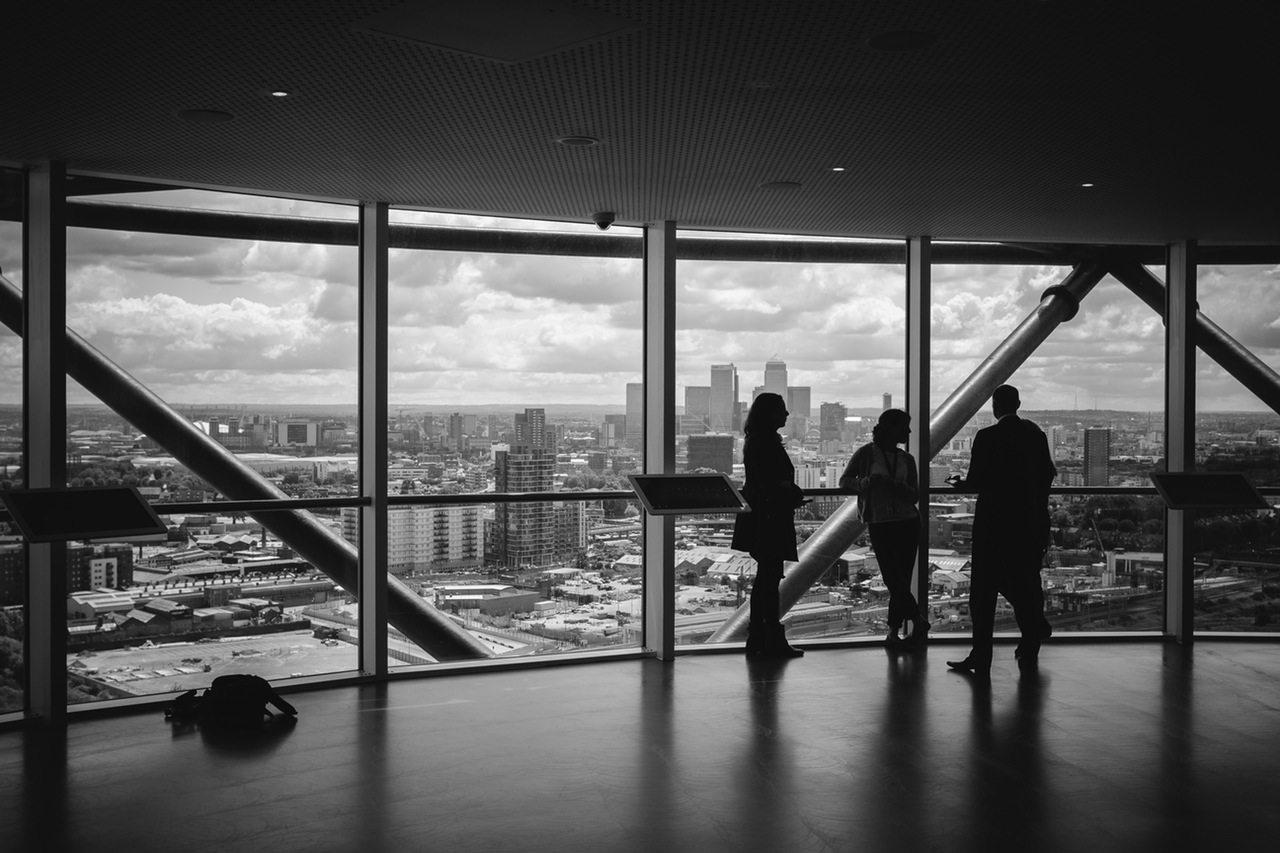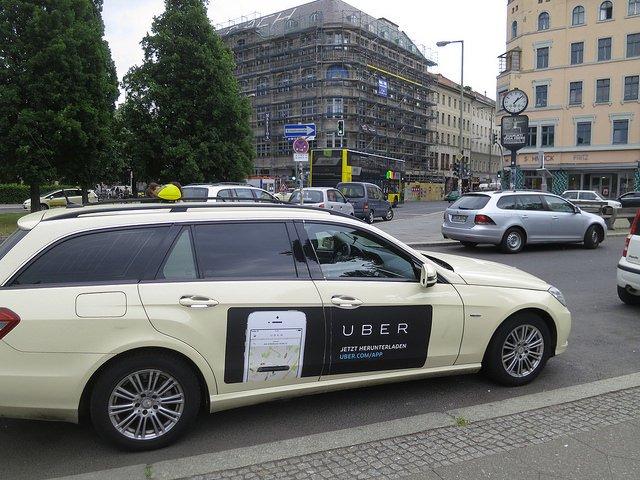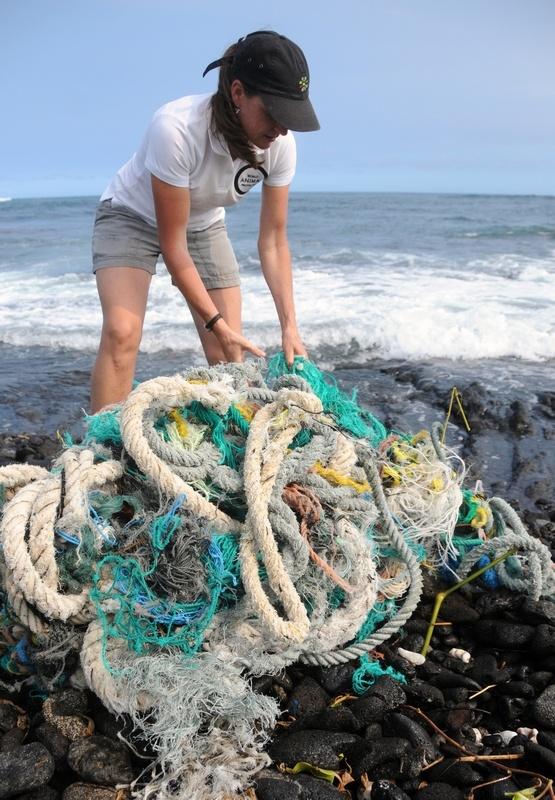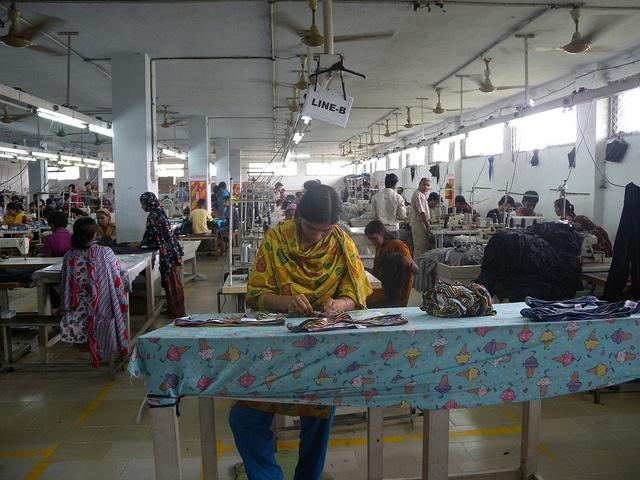Corporate Diversity Initiatives: Best Practices and Pitfalls


Editor's Note: This post originally appeared on MGMThink.
By Phyllis A. James, MGM
Now, more than ever, corporate America embraces diversity and inclusion (D&I) as a business imperative.
A business becomes stronger and more competitive when it leverages the talents of all of its employees – and their different backgrounds and cultures, different ideas and different viewpoints – to create better, more innovative ideas, strategies and methods in the delivery of exceptional products and guest services. It has been documented over and over now that inclusive, diverse teams outperform non-diverse teams in a variety of settings. The end goal is to foster inclusive, empowered work teams who are not only continuously high-performing, but also on the cutting-edge of innovative leadership in their respective disciplines. That is what gives companies a competitive advantage.
But there are some common pitfalls when it comes to companies’ efforts to implement D&I initiatives. Chief among them is the notion that a company can adopt a D&I initiative for a limited time period, and then be done with it because its workforce has magically become diverse in demographics.
This is a very short-sighted viewpoint; diversity in numbers and profiles does not automatically translate into inclusion – which is the key point of the strategic business value that diversity can bring to an organization. Frankly, our country was born of inequality and lack of inclusion. Although much progress has been made in this area, much work is yet to be done in fully embracing the fundamental human equality of all citizens in our nation, and equal employment opportunity for all employees in our companies.
Other common pitfalls companies should avoid include:
- Approaching a D&I initiative as a “feel-good social program.” A D&I initiative should be treated like a true business initiative. It must have a well-articulated mission statement, holistic strategy, documented business plans with concrete goals, adequate resource and business infrastructure investment, D&I cultural and competency education, continuous communication for all workforce levels and metrics, along with the good business case behind it. The companies that have approached a diversity initiative as though it’s just another social program have not done well with it.
- Becoming complacent. It is very easy for companies to become complacent and to think because they have a little bit of success, they’re done. Diversity and inclusion has to be a fundamental part of the way companies do business. It leads to innovative thought and practices, which give businesses a leg up in the market. Practicing inclusive thinking in everything you do leads you to the next best idea. For most companies this does not happen without continuous and well-practiced efforts.
- Being cheap. Some companies think they can throw a little bit of money at a D&I program and it will be enough for genuine, sustainable success. A D&I initiative is not like writing a check to your favorite charity, where it’s a one-time cost. It is a serious, long-term and expensive endeavor. Humans have spent centuries excluding others in life and work. It’s going to take time, significant investment and long-term commitment to right the imbalances that exist in our society.
A D&I initiative is only successful when an organization’s leadership continuously advocates and models these core values; institutionalizes these core values throughout the culture, work environment and operations of the company; invests adequate business resources to achieve excellence in implementing best D&I practices; and maintains the company’s long-term commitment to these values as a vital part of enhancing and sustaining the ultimate business value of the organization.
Hopefully, we will, at some point in the future, reach a state in American society where we no longer need formal D&I initiatives to overcome historical legacies of inequity. That time is not now. On the other hand, let us be reminded that the commitment to continuous innovation that inclusive thinking fosters should never cease. Let’s all play our part in making our companies better workplaces and our communities better places to live by living the lessons of inclusion.
Image credits: 1) Pexels 2) Courtesy of MGM Resorts International
Phyllis A. James is Executive Vice President, Special Counsel for Litigation and Chief Diversity Officer for MGM Resorts International. In this capacity she is responsible for management and supervision of Company litigation, including the coordination of outside litigation counsel. Ms. James is Chief Diversity Officer with responsibility for oversight of MGM Resorts’ Corporate Social Responsibility initiative, including the Company’s diversity and inclusion, philanthropy and volunteerism programs and Diversity and Community Engagement Department. She also serves as a board member of, and special advisor and counselor to MGM Grand Detroit, LLC. Ms. James joined MGM Resorts in March 2002 as Senior Vice President and Senior Counsel.
Kalamazoo Bike Tragedy Spotlights Safety Concerns


In the early evening of June 7, nine longtime friends who were part of a group that called themselves the Chain Gang met after work for bike ride in downtown Kalamazoo, Michigan. They aimed to cover about 28 miles roundtrip that evening. Five miles in, around 6:30 p.m., a blue pickup truck plowed into the group from behind, killing five riders and injuring four, resulting in the worst vehicle-bike fatal collision in recent memory.
Although studies repeatedly show how beneficial bike commuting is for the environment (emissions), health, traffic, parking and especially revenue for businesses along bike routes, there aren't nearly enough designated bike lanes across the U.S. Whenever the topic of bike commuting comes up, safety is invariably one of the top reasons why the majority of people walk past their bike and get into their car.
At SXSWEco in 2013, PeopleforBikes VP Martha Roskowski reported: "Seventy-five percent of people are concerned for their safety while biking on city streets. Eighty-six percent say they will not ride in unprotected bike lanes, but when they were shown a photo of a protected bike lane (with plastic posts), 90 percent of people would ride in it, and the number climbs to 95 percent if the bike lane had a curb."
PeopleforBikes' Green Lane Project works with cities around the U.S. to help them design an effective protected bike lane system, but every time the organization opens its application process, it is flooded with proposals. Many cities want the organization's help, but only so many make it into the program.
The protected bike lane system in the U.S. is growing very slowly and hasn't reached many areas (like southwest Michigan) yet. So bicyclists continue to take to the open road, as the Chain Gang did. Many of the rural roads in Michigan have very small paved shoulders (or none at all), forcing bicyclists to ride in the road. However, unlike 26 other states, Michigan doesn't have a three-feet rule, cautioning drivers to give bicyclists more space. But some say that even that law doesn't give riders much protection.
Ask any bicyclist that often rides on the roads and they will have a story about a near-miss with a car or an outright collision, and sometimes more than one time.
On June 9, Michigan bill 1029 proposed that pedestrians, bicyclists and people who use wheelchairs for independent mobility be classified as "vulnerable roadway users." Drivers who injure anyone classified as such could receive a year in jail or a $1,000 fine.
NBCNews reported that an analysis of bicycle deaths by the Insurance Institute for Highway Safety, based on U.S. Department of Transportation data, found that 720 bicyclists were killed in crashes with motorists in 2014, down 4 percent from 2013 and 28 percent from 1975. Yet, the majority of people still don't feel safe riding on the roadways without a barrier between them and motorists.
Although the Kalamazoo crash is an awful anomaly, the fact still remains that in any collision between cars and bikes, bikes lose. And as we try to encourage more people to bike instead of drive, the safety issue remains a large obstacle.
Before the truck hit the cyclists, there were three calls to 911 about a blue truck driving erratically. Police were on the lookout, but hadn't spotted it before the crash. No reason has been officially reported for why the driver was impaired, but Charles Pickett Jr. was later charged with five counts of second-degree murder and four counts of reckless driving causing serious impairment for those injured.
Kalamazoo was also the site of a mass shooting in February, in which six people were kill by Jason Dalton, who picked up fares an Uber driver during the rampage. The community is rallying again to support its residents after another tragedy. (#kalamazoostrong)
On June 8, the Kalamazoo bicycling community hosted a silent ride in remembrance of the five bicyclists killed and in support of the wounded survivors. It was open to anyone with a bike and a helmet, and hundreds turned out. The ride began at Arcadia Brewing Co. in downtown Kalamazoo. Participant Bobby Guy posted this video.
https://youtu.be/NnqDGbgtvM8
On June 14, Lance Armstrong came to Kalamazoo to finish their ride.
Along with family and friends of the accident victims, Armstrong donned a Chain Gang jersey, began at their starting point, and rode the 28.5 mile route they began a week earlier.
The Detroit Free Press reported that Armstrong "walked slowly through a crowd of hundreds to shake hands, to listen politely, to grieve with a community reeling from last week’s crash that killed five bicyclists and injured four others."
"We’ve all had cars come just a little too close and it scares you,” Armstrong told a crowd near the Kalamazoo County Health and Community Services parking lot, the paper reported. “We all know that, but none of us knew this. Over the years, there have been tragedies and incidents but nothing to this level. As I told Steve [Johnson, of Johnson Cycle Works] and his group earlier, thank you for letting me come.“I know that I’m not for everybody, but this one touched home.”
image credits: 1) ghost bike - John McNeill WKZO; 2) Lance Armstrong ride - Kalamazoo resident and avid bicyclist, Rana Findling.
Study: Big Banks Pour Billions Into 'Extreme' Fossil Fuels


The world’s largest banks are the bankers to fossil fuel companies, providing them with hundreds of billions of dollars, a recent report finds.
A joint report by the Rainforest Action Network (RAN), BankTrack, Sierra Club and Oil Change International examines bank financing for fossil fuels. The seventh edition of an annual report, it evaluates the policies of 25 American, European and Canadian banks regarding what the NGOs call "extreme" fossil fuels, the most carbon-intensive sectors which include coal mining, coal power, extreme oil (tar sands, Arctic oil, ultra-deep drilling) and North American liquefied natural gas (LNG) export. What they found in a nutshell is that the banking sector is driving climate change through investments in these sectors.
In December, world leaders agreed to limit global temperature rise to "well below" 2 degrees Celsius. What the banking sector is doing with regards to extreme fossil fuels isn’t compatible with the commitments made in Paris. “The top finding from the report is that the largest banks are pouring hundreds of billions of dollars into fossil fuels that are most incompatible with a climate-stable world,” Amanda Starbuck, climate and energy program director for RAN, told TriplePundit.
“What the report exposes is that to stabilize the climate, it’s not just coal that needs to stay in the ground but several other extreme fossil fuels as well,” Starbuck said. “And that’s why this year we decided to expand the report and look at all of those sectors."We discovered that while we’re seeing steps in the right direction on coal mining, the entire banking sector continues to pour billions of dollars into extreme fossil fuels. We didn’t find any banks that are yet taking seriously the extreme oil or the LNG side of the problem.”
A look at the findings of the report highlights what Starbuck summarized. Over the last three years, the 25 banks studied provided:
- $42 billion for coal mining companies, led by Deutsche Bank with $6.73 billion
- $154 billion for the 20 largest coal-fired power producers, led by Citigroup with $24.06 billion
- $306 billion for companies that drill extreme oil, led by JPMorgan Chase with $37.77 billion
- $282 billion for companies building LNG export infrastructure, led by JPMorgan Chase with $30.58 billion
Six banks make the top 10 of each extreme fossil fuel category: JPMorgan Chase, Bank of America, Citigroup, Deutsche Bank, Morgan Stanley and BNP Paribas. Each of the banks state on their websites that they are taking steps to be more environmentally sustainable, including addressing climate change. JPMorgan Chase vows that it is taking a “a range of actions to consume energy as efficiently as possible and reduce greenhouse gas emissions.” The other five banks have similar statements:
- In a statement, Bank of America Vice Chairman Anne M. Finucane says the bank recognizes the “opportunity and responsibility to help finance the transition to a low-carbon economy.”
- Citigroup stated in its 2015 Global Citizenship Report that “financing renewable energy and other environmentally positive projects is a vital component of our Sustainable Progress Strategy.”
- Deutsche Bank states that in the areas of energy and climate change, “We have developed strong capacities to promote the transition towards a cleaner and energy-efficient global economy.”
- The U.S. economy is “already beginning to feel the effects of climate change,” Morgan Stanley declares on its website, and those effects “likely affect corporate profitability and government budgets on a global scale, creating long-term ripple effects in the markets.”
- French multinational BNP Paribas states that it has supported climate change research since 2010 through BNP Paribas Foundation’s Climate Initiative program. The goal of the initiative “is to understand and anticipate the impact of climate change on our environment as well as local populations around the world,” BNP says.
There is some good news. Ten of the largest American and European banks have committed to reducing their funding for the coal-mining sector in the last year, the report found. It started with Bank of America in May 2015, and since then, nine other banks in the U.S. and Europe made commitments to limit their financing of the coal sector, and some have even made commitments to end it.
“We see this as a positive step,” Starbuck said. “Coal is one of the most carbon-intensive fossil fuels, and we know that to stabilize the climate, coal needs to stay in the ground. This shows that the biggest financial institutions are capable of making the decision to end investment in fossil fuels.”Image credit: Flickr/eutrophication&hypoxia
In Philadelphia, A Bold Experiment In Sustainable Journalism


"People are starting to realize that serious journalism in big cities could actually go away," says Terry Egger, publisher and CEO of the Philadelphia Inquirer. "We need to find new ways to deliver news."
Five months ago, the 86-year-old billionaire owner of the Philadelphia Media Network (PMN) — which owns the Inquirer, the Philadelphia Daily News and Philly.com — donated the company to a new not-for-profit foundation. The owner, H. F. "Gerry" Lenfest, gave that foundation $20 million. He also changed PMN's corporate status from an LLC to a Public Benefit Corporation (PBC), which is chartered to create a social benefit while also generating profits for shareholders.
Philadelphia joins a growing list of cities where local news has become a civic cause. Several newspapers have recently been sold or given to foundations, according to a new report by Tim Griggs of the Knight Center and School of Journalism at the University of Texas. Many other papers are watching closely. The benefit corporation is a new tool for the news business, one among several that might come in handy as publishers search for kinder and gentler forms of ownership.
Newspapers are in desperate financial condition after decades of losing readers and advertisers to the Internet. The total weekday circulation of American newspapers declined by 29 percent between 1990 and 2014, according to the Pew Research Center, even as the U.S. population increased by 28 percent. Newsroom jobs decreased by 34 percent in that period, and the cuts keep coming. PMN laid off 40 more reporters last November.
With their backs to the wall, publishers are questioning basic business assumptions. But Griggs, whose study outlines alternative models of newspaper ownership, says it's too soon to tell whether Lenfest's bold move will give good journalism a secure home in Philadelphia.
"Nonprofit is not a business model," he writes. "No change in structure will guarantee journalistic or financial success. To survive, [newspapers] need to take a dramatic leap forward into the digital age and find a smoother road to economic sustainability."
Terry Egger, who came out of retirement last year to lead PMN, says he took the job to blaze a trail other papers could follow. "We are still an entrepreneurial for-profit corporation," he says. "The agreement requires us to cover our own operating expenses. But the foundation and the benefit corporation give us more flexibility. Now, if we get a grant to cover education for two years, we can use our advertising revenue to cover expenses elsewhere."
The Media Network has 10,000 shares. All but one is non-voting and held by the Institute for Journalism and New Media, the foundation Lenfest endowed, which is part of the Philadelphia Foundation. The voting share is owned by PMN, giving its board of directors power to run the newspaper independently.
PMN gets more editorial flexibility by committing to a public benefit, says Richard Fox, a shareholder at Buchanan Ingersoll and Rooney who was the lead attorney for the deal. "It's common for shareholders in an ordinary corporation to object when management makes decisions that reduce short-term profits," he says. "We don't anticipate that ever happening in this case, but if it did, the Media Network's directors would be able to point to language in their corporate charter that obligates them to work for the public interest."
Lenfest said that he hopes to increase the Institute's endowment to $100 million. Egger, a former publisher of the St. Louis Post Dispatch and Cleveland Plain Dealer, says that although an endowment will help, the real task is finding ways to deliver a public service that don't lose money. PMN's new status allows it to consider experiments that investor-owned companies would never attempt.
Collaboration is likely to be part of the answer. "There are thousands of student journalists in Philadelphia," Egger says. "They are part of a broader ecosystem of journalists that includes community newspapers and bloggers. We might not share our scoops with them, but we don't really compete with them, either. We'll work with them. We will be like a teaching hospital for journalists."
Griggs says that over 100 not-for-profit websites have sprung up in recent years to deliver local news. At least one seems like competition for the Inquirer. The Philadelphia Citizen launched last September and has grown steadily. "We're part of the conversation now," says executive director Larry Platt, a former editor of the Philadelphia Daily News.
The Knight Foundation is following the Inquirer experiment and others in Miami, Dallas and Minneapolis. Griggs' report is part of an effort for participating papers to share what they learn. "Gerry's gift has created a lot more than a platform for funding," Egger says. "He has also started a serious national conversation about the benefits full-service journalism brings to big cities."
Image credits: Flickr/Kevin Burkett
Responsibility, Transparency and Customer Engagement Are Keys to Marks & Spencer’s Success


Marks & Spencer (M&S) has long been a leader on corporate responsibility and sustainability within the retail industry. The venerable department store chain, which operates over 1,000 stores across the United Kingdom and three continents, makes the case that customers should be at the core of any company’s drive to stay profitable while becoming even more responsible.
The company’s decade-long 'Plan A' sustainability agenda is one full of painstaking details. For example, the retailer behooves its suppliers to adhere to a bevy of standards if they want their products stocked within the stores’ aisles and shelves. That is just one detail within M&S’s 13th sustainability report, which describes how a company employing almost 83,000 people and generating $14.8 billion (10.4 billion British pounds) can take on 103 various sustainability initiatives and also remain carbon-neutral.
The continuity is especially impressive considering that the company had three CEOs over the past 10 years, but those changes in executive leadership did not interfere with integrating sustainability deeply within its business practices.
Responsibility applies to people and the planet
Environmental sustainability is important to M&S’s Plan A, but its focus on human rights is even more impressive. The retailer’s recent human rights report, 60 pages long, is full of information on some of the world’s most pressing human rights challenges, how they could affect the company’s business and what steps M&S has taken to address them within its supply chain. Efforts the company has undertaken are all over the map, from working with NGOs to boost youth employment for those who have disabilities in Bangladesh, India and Sri Lanka, to its work on stamping out slavery within the Thai shrimp industry.And M&S is complementing that work with its improved environmental performance. Store and warehouse energy efficiency in the U.K. and Ireland improved by 39 percent. Food waste also declined by 9 percent, largely due to a partnership with the social networking website neighbourly.com, which linked M&S to over 500 NGOs focused on hunger and helping the needy. Overall, now M&S claims 73 percent of its product have a sustainability attribute — up from 64 percent last year.
Don’t just talk about transparency, show it
Many companies talk about being transparent, but often those conversations launch after a firm has been busted and exposed on social media. M&S, however, is an organization that is far more proactive than many of its competitors. “Transparency has been a big focus for us,” Adam Elman, global head of delivery for M&S, told TriplePundit in an email. “We’ve responded to growing the trends and requests from stakeholders and customers to provide greater information about how we operate, our standards and our performance.”Whether one wants to learn the the source of M&S’s meals at its food halls, or the factories in which its apparel is manufactured, the company shares such information with an online mapping tool. Anyone who is curious can click on a country, and then a factory, and glean some more information, on, for instance, one of the several garment factories in Bangladesh from which M&S sources some of its clothing items.
The company says it is also consulting with stakeholders and consumers to learn more about what they consider important on issues related to transparency. That information will be available by 2020. But in the meantime, M&S issues a quarterly newsletter to update those interested in the country’s global operations.
Bring customers along the company’s sustainability journey
M&S’s sustainability plan is hardly one that uses a top-down approach. Examples of how the company strives to inspire its customers include its Shwopping program, a clothing recycling initiative the company has operated in partnership with Oxfam since 2008. Shwopping garnered 2.7 million garments last year and over 24 million since it started eight years ago. Despite the program’s expansion to seven additional countries, Elman said this is the one program that M&S has deemed “behind schedule.” Customers who donate clothes gain points on the company’s loyalty program.Customers can also do their part by choosing a charity, to which M&S will donate funds, every time they swipe the company’s loyalty card — and the company offers the option for customers to receive updates on these nonprofits’ progress if they wish. Also connected with this loyalty program is another staff and customer engagement program, 'Spark Something Good.' So far, this initiative has motivated 1,700 people, within and outside of M&S, to work with 24 NGOs on local community volunteering and social enterprise projects throughout the U.K.
“We’ve also put a lot of work, and are continuing to do so, to improve our corporate Plan A website to provide greater levels of information,” Elman said. But to date, the copious amount of information M&S already shares with the public serves as an example of how sharing information openly can only help both a company’s bottom line, as well as its reputation in the marketplace in the long term.
Image credit: Marks & Spencer
Strippers and Ubers? They May Be More Alike Than You Think


When you think of Uber, strippers aren't likely to pop into your head. For one, Uber drivers, unlike taxi drivers, don’t expect a tip when the customer exits the car while strippers almost exclusively rely on tips for their financial security. But maybe the two careers have more in common than you think.
A federal jury in an appeals court ruled last week that strippers are considered employees, rather than independent contractors. Some of the guidelines used by the jury, with a final ruling from Judge J. Harvie Wilkinson of the U.S. Court of Appeals for the Fourth Circuit, can be applied to Uber drivers’ desire to become employees, rather than contractors, of the ridesharing company.
The case was introduced following a lawsuit from strippers in Maryland claiming they weren’t being paid salaries by their employers and were instead considered independent contractors. In September 2011, the dancers signed documents stating that they were not employees but rather worked for themselves. The dancers exclusively made their money from tips and “performance fees” while being denied a flatline wage.
Wilkinson and the jury looked at the Federal Labor Standards Act to determine whether the dancers constituted as workers who are “economically dependent on the business to which he renders service or is in business for himself.”
Wilkinson’s opinion stated that the clubs and their owners had almost complete control over the dancers’ work. They created the schedules, set workplace rules and priced the costs for private dances. He further wrote that clubs set their own hours, managed their advertising, and sold beverages and food at the clubs. Wilkinson concluded that the hands-on operations the club owners operated were too much to consider their dancers independent contractors.
A Bloomberg report noted that many of the takeaways from Wilkinson’s opinion can also be applied to Uber drivers’ fight for employment. Uber sets detailed rules and guidelines, creates fees, and advertises its own product. The only substantial difference is that dancers don’t set their own schedules, while Uber drivers put the keys in their ignition whenever they so please.
The article written by Noah Feldman suggests that Wilkinson acted intuitively in his decision because if the dancers worked in a club, they therefore must be employees. Feldman said that it’s often tricky to give “gig workers” titles and that there needs to be a better “way to analyze what the law requires when it comes to nontraditional forms of employment.”
In April, Uber settled two class-action lawsuits in California and Massachusetts in order to keep its drivers as independent contractors. The landmark agreement will require Uber to pay roughly 385,000 drivers $84 million, with another payment of $16 million if the company goes public and its valuation increases dramatically. Uber has no interest in treating its drivers as employees because the company would then have to dole out benefits and other costs, which would prove to be expensive.
So, while strippers received good news this month regarding their employment status, Uber drivers continue to pick up customers as independent contractors.
Image credit: Alper Cugun/Flickr
Mississippi Residents Struggle to Access High-Speed Internet


Thirty-four percent of people living in Mississippi will have trouble viewing this article. Mississippi, the state with the highest percentage of the population without access to fixed broadband, is struggling to bridge the digital divide between the wealthy and the poor, the urban and the rural, the white and the black.
The number of poor, rural communities in the Magnolia State presents a challenge to Internet providers because of the high expense of reaching those lowly populated areas. The high costs often lead providers to avoid investing in these communities, leaving residents searching for alternative ways to access the Internet, such as public libraries.
In a day and age where the Internet runs the world, not having sufficient access can put you lightyears behind. Whether it’s searching for jobs, applying for jobs, connecting with businesses or even simply sending emails, not having the Internet readily available to you instantly sets you behind.
Roberto Gallardo, a professor at Mississippi State University and a grassroots organizer who makes long trips through the state to lobby for faster Internet, said not having fast Internet is detrimental to a person’s socioeconomic wellbeing.
“When I get the question ‘Why should I pay more for faster Internet? Why would I want faster Internet?’” Gallardo said, “I respond, ‘That’s like asking 100 years ago why I want electricity when I already use candles.’”
The Center for Public Integrity finalized a detailed report showing the disparity between the affluent and the poor’s access to broadband. The story reported that more than 13 percent of low-income areas in the United States don’t have access to broadband. That 13 percent is nearly five times higher than the rate of access in the wealthiest areas in the country. Even in urban areas, the report found substantial difference in Internet access between wealthy and poor.
Gallardo sees Internet access for youth as a great tool to escaping poverty.
“I believe that technology … can help level the playing field,” Gallardo told Darnell Moore in a Mic.com video. “Not only between urban and rural, but among different socioeconomic and demographic groups.”
Mississippi, the state with the highest percentage of African Americans, is last out of 50 in states when it comes to high-speed access and is joined by Montana (31 percent) and West Virginia (30 percent) at the bottom of the barrel. Montana and West Virginia are also states that enjoy a lot of rural settings, but interestingly enough, Montana has the lowest percentage of African Americans in the country.
Image credit: Yazan Badran/Flickr
The Answer to North America’s Energy Challenge is Blowing in the Offshore Wind


A post by DONG Energy
The Danish company DONG Energy believes that the U.S. has the perfect conditions for exploiting the potential of offshore wind. The company, which built around a quarter of the world’s current offshore wind capacity, has acquired the rights to establish wind farms in two areas off the U.S. East Coast, and expects offshore wind energy to be cheaper than fossil energy within 10 years. ”It’s a matter of drawing on experiences from other parts of the world and thinking big,” says Thomas Brostrøm, head of DONG Energy’s U.S. operations.
Green conversion requires fresh thinking
The gradual conversion of U.S. energy from fossil fuels to more sustainable energy sources has been ongoing since the energy crisis in the 1970s. The primary focus has been on energy from onshore wind turbines. Since 2000, the amount of energy generated by onshore wind has risen twenty-fold, yet, despite many years of preparations, the U.S. is still awaiting its first offshore wind farm. DONG Energy, which already supplies offshore wind power to 18 million Europeans, will now help to change that.
So far, the U.S. has been able to use the large, relatively sparsely-populated areas of the Midwest to install onshore wind turbines. But implementing sustainable solutions to energy and environmental problems around the cities and densely populated areas of the East Coast and elsewhere in the country is a challenge – and that is where offshore wind comes into the picture.
”Offshore wind farms are an obvious local alternative to fossil power stations in metropolitan areas and the obvious way to ensure sustainable energy supplies for Americans in the future,” says Thomas Brostrøm.
Ideal conditions
The government-owned National Renewable Energy Laboratory (NREL) has identified a number of areas off the U.S. coastlines that are suitable for wind farms. NREL estimates that these areas can deliver upwards of 4,000 gigawatts – roughly four times the total energy requirement of the U.S. The estimate is theoretical, but it gives an idea of the potential of offshore wind.
Some of the most suitable areas are off the eastern seaboard, where DONG Energy has provisionally acquired the rights to build two offshore wind farms. The seabed there is similar to that of Europe, where offshore wind is the fastest growing energy technology. DONG Energy now generates more than a quarter of Europe’s offshore wind power, and will be able to draw on this experience when developing the new wind farms in the United States.
The plan is that one of the offshore wind farms will be sited 90 kilometers (about 56 miles) off the coast of Massachusetts. From here, it will provide sustainable energy for citizens in and around Boston, while the other wind farm will be sited around 15 miles off the coast of New Jersey. The first farm alone will be able to cover the power consumption of nearly half a million U.S. homes. This is only possible because offshore wind is stronger and more reliable than onshore wind, consequently generating a greater output.
Green energy needs to be cheaper than black
Thomas Brostrøm points to the strong technological developments within offshore wind in recent years, which have brought about a significant reduction in costs.
”For one thing, the blade span of the wind turbines has more than doubled in about 15 years. Wind farms are getting bigger and can be located further out at sea, where they are out of sight and can take advantage of the higher wind speeds. At the same time, we’re continually getting better at standardizing and optimizing installation and maintenance of wind turbines. All this is helping to drive down costs, which ultimately means more green energy for our homes,” Brostrøm concludes.
Image credits: DONG Energy
DONG Energy is one of the leading energy groups in Northern Europe, headquartered in Denmark. It employs 6,700 people in developing, constructing and operating offshore wind farms; generating power and heat from power stations; providing energy to residential and business customers on a daily basis; and producing oil and gas.
Sustainable Seafood is a Global Responsibility – and Opportunity


By Elizabeth Hogan
Long after its initial use, lost fishing gear persists in the world’s oceans for up to hundreds of years. It may travel vast distances, from continent to continent. It’s found in every ocean and sea on earth, from remote Antarctic habitats to North America’s expansive coastlines. And this lost, abandoned or otherwise derelict fishing gear – known ominously as “ghost gear” -- is a major reason why the world’s oceans are a perilous place to live. Hundreds of thousands of animals are killed every year by the approximately 640,000 tons of gear that are left in the world’s oceans annually.
Every lost fishing net is a floating death trap. When 870 ghost nets were recovered off the coast of Washington state, they contained more than 32,000 marine animals, including more than 500 birds, turtles and mammals. World Animal Protection estimates that entanglement in ghost gear kills at least 136,000 seals, sea lions and large whales every year around the world. And an inestimable number of birds, turtles, fish, and other marine species are injured and killed by ghost gear, too. Once entangled, marine life can drown within minutes or endure long, slow deaths lasting months or even years.
Ghost gear is a problem without simple villains or easy solutions. Gear loss is most often caused by commonplace occurrences, such as extreme weather, strong currents, or gear conflicts between active trawlers and static nets. The fishing industry itself is heavily invested in solving the ghost gear crisis, since derelict gear costs many millions of dollars in clean-up expenses and lost fishing time and compromises yields and income for fisheries. The loss of marketable lobster due to ghost gear, to look at just a single species, is estimated to cost $250 million per year globally. There are no ghost-gear-free seafood brands for consumers to choose, because of the convoluted nature of seafood supply chains; at a local grocery store in New York, for example, you may buy fish that’s been caught in Thailand, processed in China and packaged in Europe.
The transnational nature of the ghost gear problem means that global, cooperative solutions are imperative to solving it. The Global Ghost Gear Initiative, the first cross-sectoral alliance committed to driving solutions to lost and abandoned fishing gear worldwide, was launched in 2015 with participants from the fishing industry, the private sector, academia, governments, and intergovernmental and non-governmental organizations.
Solutions to the ghost gear problem will also be on the agenda at the July 2016 meeting of the Committee on Fisheries (COFI), a subsidiary body of the U.N.’s FAO Council. A crucial aspect of solutions proposed will include prioritizing the marking of fishing gear. While seemingly simple, gear marking has the potential to be a game changer. Enabling recovered gear to be tracked back and returned to its source – now very difficult without global guidelines in place – can potentially reduce the accumulation of ghost gear in our oceans. Gear marking would also help to combat illegal, unreported and unregulated fishing, known as IUU fishing, which threatens ocean ecosystems around the world.
Businesses also have a major role to play. Companies like Bureo – which uses recovered ghost gear to make skateboards and sunglasses -- show that with a little innovation, the materials used to make fishing gear can be sustainably recycled. Patagonia also creatively repurposes lost nets by integrating recycled fishing nylon into many of its products.
We urge all COFI Member States to commit to prioritizing the marking of fishing gear this summer. The U.S. has so far been a leader in ghost gear recovery. NOAA’s Fishing for Energy program, modeled after Hawaii’s Nets to Energy program, recycles recovered fishing gear into reusable steel and derelict nets into energy. We are hopeful that the U.S. will continue to take a leading role in reducing the proliferation of ghost gear. But this is an issue that truly demands international attention and solutions. Tags from lobster pots set in Maine and Newfoundland have washed up in Scotland; fishing nets from Asia turn up on Hawaiian beaches. Finding and implementing sustainable solutions to such a complex problem is difficult – but it’s also an opportunity to shape a better future for marine industries and animals alike.
Image credits: World Animal Protection/Rachel Ceretto
Elizabeth Hogan is U.S. Oceans and Wildlife Campaign Manager at World Animal Protection. Her work focuses on marine wildlife entanglement, whaling policy, marine wildlife in captivity, and illegal wildlife trade. She has a degree in Foreign Service from Georgetown University and a dual Master of Science in Marine & Coastal Natural Resources and a Master of Science in Sustainable Development from the University for Peace in Costa Rica and American University in Washington, DC.
Data Mapping Improves Compliance and Transparency in Bangladesh’s Garment Industry


The garment industry is the largest export sector in Bangladesh, and is the second largest contributor to the country’s foreign currency reserves after remittances from overseas workers. This sector has been instrumental in driving the country’s economic growth, with an approximate 3.6 million out of 156 million Bangladeshis working in the country’s approximately 5,000 garment factories.
But one study released earlier this decade suggests that, despite the garment sector providing 45 percent of the country’s industrial employment, it only contributes 5 percent to Bangladesh’s total national income. Low wages in the industry also correlated with notoriously unsafe conditions, leading to tragedies like the Rana Plaza disaster and a global shaming of many of the world’s largest fashion brands as, at first, denial and excuses superseded accountability.
Those 1,130 people who lost their lives at Rana Plaza -- and the shattered lives of untold family members and friends -- cannot be reversed, but to the garment industry’s credit, workers’ safety and job rights have seen improvement in Bangladesh. But in order to guarantee that transparency and compliance within this sector continues to improve, additional data that stakeholders can easily access is necessary to ensure another preventable disaster does not occur again. One project underway at a leading university in Bangladesh shows promise in helping those vested in the country’s garment sector to work together in order to bolster the safety of employees.
To that end, TriplePundit spoke with Mohammad Rezaur Razzak, associate professor of entrepreneurship and strategy, by telephone from his office at BRAC University in Dhaka, Bangladesh. Professor Razzak's team has developed a mapping tool that will include key information about the nation’s garment factories; that information in turn will ensure that the garment industry can grow responsibly and continue to contribute to Bangladesh’s growing economy.
Mapping Bangladesh's garment factories
The Participatory Factory Mapping Research (PFMR) tool became possible with the collection of data from over 450 factories in the Mirpur and Kaliakair districts of the greater Dhaka area.
One of the project’s first challenges was the identification of factories. Data about Bangladeshi factories was previously dispersed between a half-dozen databases, but all were hampered by inconsistent or duplicate data. As is the case with the garment industries in other countries, this sector in Bangladesh is one that includes massive manufacturing plants and mills as well as small shops that function as subcontractors for larger factories. Razzak, along with his team of professionally trained enumerators and graduate students, spent over a month last summer pinpointing these factories. The team then developed a set of data and questions that included the types of production, number of workers, export destinations and affiliated brands.
This project’s mission is an important one for BRAC, which has long been involved with Bangladesh’s garment industry. And after the Rana Plaza collapse, the university’s Center for Entrepreneurship Development, of which Razzak serves as director, saw an opportunity to use its expertise to bring tangible changes to the industry. “Our center was up to encourage entrepreneurship amongst students, but then the time came to make a contribution to society in terms of one of our country’s most important businesses,” Razzak told 3p.
Gaining industry buy-in to ensure transparency
Key to this project’s success was gaining the cooperation of the large industry groups, including the most influential one, the Bangladesh Garment Manufacturers and Exporters Association (BGMEA). This project already had the buy-in of human rights organizations, labor unions, the C&A Foundation and representatives of some foreign embassies. But one issue, the degree of transparency and sort of information that this survey would reveal, was one that made several BGMEA members skittish.
Nevertheless, the reputation of BRAC, along with the understanding that the long-term survival of Bangladesh’s garment industry was at stake, convinced all stakeholders that access to data is crucial and could only prove to be a net-positive for everyone in the sector.
As of now, PFMR’s mapping tool provides a high-level overview of the factories included in this survey. Users can hover over a factory’s location and see the number of employees, its gender ratio, the types of products manufactured, as well as the brands and markets for whom these garments are made and then exported.
Queries can also be entered to ascertain which factories make what sort of products for which brands. While data on safety inspections and violations are not yet part of this database, users can assess whether factories are registered with organizations including the BGMEA, along with the agencies that monitor Bangladesh’s labor inspections and fire safety. At a most basic level, users can gauge which factories have made moves toward registering with garment industry associations and local authorities — versus others that are more opaque about the data they share.
“As far as transparency goes, the realization within the industry was that you cannot sweep these issues under the rug,” Razzak told us. “Workers are now more conscious of their rights and want to know which factories have better conditions and wages, as they will move to those factories. The fact is that market forces and trends in this industry will provide a huge advantage to factories that agree to be transparent over those that are not compliant.”
Rallying stakeholders around better information
The PFMR mapping tool is not yet in the public domain. As Razzak explained, collecting the data was the easy part: The larger challenge as gaining agreement from the garment industry’s various stakeholders on what kind of data will be included in this database, how that information will be presented, and the procedures covering how to update the information as it changes.
The C&A Foundation is funding this project, but if it scales to include the vast majority of Bangladesh’s factories, then discussions will need to be held with fashion brands and garment buyers on contributing to its cost.
As of now, this project covers less than 10 percent of Bangladesh’s garment factories, and the database would be far more robust if it included information on labor agreements and workplace violations. But in the murky world of garment manufacturing, PFMR’s researchers found that 80 percent of these factories are subcontractors, a huge step in allowing companies to improve the traceability of their garments within their supply chains. “We don’t have a limit as to how far we want to go,” Razzak said, “but we would like to cover 99 percent of exporting factories.”
Even if the long-term results cover 75 percent of Bangladesh’s factories, this project would be a huge step forward for the country’s garment sector, as more information would help empower workers while allowing companies to truly show their commitment to responsible sourcing.
Image credit: Flickr/Tareq Salahuddin